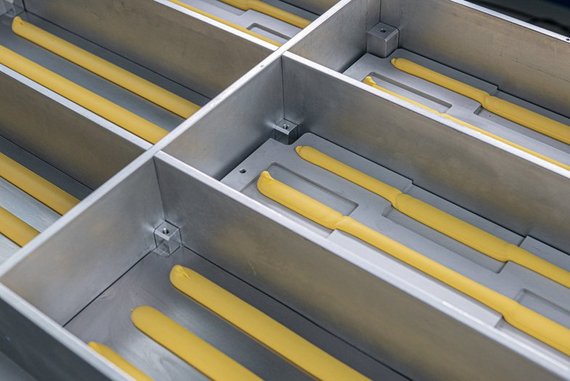Thermally conductive pastes and gap fillers
Whether in communication, automotive electronics or in the field of e-mobility, thermal management is steadily growing in importance. New product designs are increasing in efficiency and decreasing in size. Besides, they must implement far more functions than their predecessor versions. The electronic components and assemblies thus need to be protected from overheating and from power losses that may occur. This is where thermally conductive adhesive systems come into play, which offer an ideal solution when mechanical fastening or structural bonding are required next to a thermal bond. In many applications, however, it is necessary that once the connection is made, it can be dismantled in order to allow for replacing defective components and thus to provide a possibility to repair cost-intensive assemblies in a simple manner. Thermally conductive pastes and thermally conductive gap fillers are a smart solution in terms of removability.

Thermally conductive pastes generally feature high viscosities, but remain dispensable and easy to handle. They are mostly pressed between two substrates to fill a gap to ensure reliable heat dissipation between the respective substrates. In contrast to adhesives, their main advantage is their lack of cure. They remain pasty during their service life and feature a natural self-adhesion, which enables them to be easily pre-assembled. At the same time, they allow for disassembly of components if needed.
Gap fillers are available as 1-componenet, unreactive systems which remain pasty or as two-component reactive systems that cure with moisture and result in elastic materials after cure. In contrast to adhesives, they can easily be removed once cured. Typically, additional mechanical fastening is necessary in both cases.
The thermal conductivity of pastes and gap fillers, as well as thermally conductive adhesives, is provided by the use of special fillers. Depending on the type and shape of the particles, these fillers may have a high degree of hardness (Mohs hardness), which are of particular importance for processing and dispensing and therefore require an adapted system design. By adding different additives and filler combinations, the properties of the products can be controlled and tailored to the respective application.
Polytec PT thermally conductive gap fillers and thermally conductive pastes are silicone-free and low or non-abrasive and have been developed for professional and reliable use.
